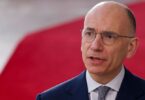William M Briggs
In 2021, Treasury Secretary Janet Yellen assured Americans that recent inflation was “transitory.” Back in 2017, Yellen, then Chairman of the Federal Reserve Board, hinted there would not be another financial crisis “in our lifetimes.”
Maybe she got that idea from Morgan Stanley boss James Gorman, who in 2013 put the chance of a crisis “in our lifetime” as “close to zero” as he could imagine. Well, imagination, as the song says, is crazy. “Your whole perspective gets hazy.”
These two experts, as Alex J. Pollock and Howard B. Adler tell us in Surprised Again! The Covid Crisis and the New Market Bubble, are far from alone. Economic experts, they confirm, have a collective accuracy that would embarrass a busload of blind golfers. Not one expert, they remind us, saw the Great Depression coming. And none foresaw the Calamitous Coronadoom Panic of 2020. Which lasted until now.
What is fascinating is that being wrong in no way dents the awesome armor of assurance donned by our experts. Whatever they do when given power, they do it boldly and without doubt. Whether this lack of humility is caused by amnesia or hubris can be debated. But no one can doubt the astonishing effects of the economic “solutions” foisted upon us by a string of experts during the panic, each trying to correct the ill effects of the other “solutions.”
Pollock and Adler take us through it all: From the Covid lockdowns to the Fed printing money with glee; from the resultant market swings to the rush and retreat from cryptocurrencies; from the run in the housing market to crushing municipal debt and its ill effects on pension funds; from ballooning student loan debt to—again—the banks and the Fed.
This book serves as an excellent introduction to modern economics and monetary policy, presenting it cleaner than in any textbook, and with a complete absence of pedantry. Theory is backed by observation in a wonderful sort of Appendix (my favorite part) at the book’s end, a mini spreadsheet where the reader can write down a handful of indices when reading and compare them with history and with the authors’ predictions (also printed there).
Primarily, this is a book in which we re-learn the ancient truth that much of what we have learned will be forgotten in the next crisis. One perennially lost lesson, even though it’s been verified by history time and again, is that panic kills, both in the literal and figurative sense. This is not a book about public health, though. Pollock and Adler accept medical (what passed for ) “solutions” as a given, and only question economic “solutions.”
Take the catastrophic effects of lockdowns. The Dow was hovering around 29,000 when the Coron-adoom panic hit. Then the government caused record unemployment by forcing many out of work for “two weeks” to “flatten the curve.” The Dow then plunged by about 10,000 points. The same kind of thing with the NASDAQ, and with other market indices around the world. GDP dropped ten percent.
People rushed to cash and caused “an inability of market makers to efficiently handle trades.” Bonds, collateralized loan obligations, and other similar instruments were smacked hard. Tax revenue dropped, and municipalities that received income from airports, stadiums, and the like suffered, putting great pressure on public pension funds. Commercial real estate, like malls and retail rentals, felt deep pain.
Things weren’t all down, down, down. One thing that went up was residential mortgage delinquencies. And, eventually, inflation. That went way up.
Inflation was triggered, mainly, by the Fed’s printing spree, which, our authors tell us, happened because they followed the advice of Walter Bagehot, who had argued “central banks should lend early and freely” during crises to quell fear. And this advice worked. Sort of. “The short-term effects of the federal programs were beneficial; the longer-term financial impacts raise profound concerns,” the authors tell us. It is those profound concerns that interest us most.
The panic, in economic terms, is a story of the creeping tendrils of government insinuating themsel-ves into every available cr-evice. The style and motive of government beneficence in the panic puts one in mind of Mr. Potter from It’s A Wonderful Life. Like our rulers, Mr. Potter guaranteed his bank sufficient funds to remain open during a run. The side effect was that, after the panic ended, he was left in control of the bank.
What about our panic—and future panics? Given the almost routine occurrence of economic panics, should the government make it known they will guarantee banks, loans, and other monetary investments? “Or,” the authors asked, “should the government promise never to make any future interventions, in order to force the market to price in all the risk?” In other words, make people act and accept responsibility for their actions. “Who would believe that promise? We wouldn’t. Would you, Candid Reader?”
If you did believe, it would, as the saying goes, be the triumph of hope over experience.
There isn’t space here to discuss every aspect of the panic our authors tackle. But one of the most relevant is cryptocurrencies. At the start of the panic, Bitcoin, the best known and therefore most viable faith-based currency, was about one per $10,000. Like with other markets, the panic led to a sell off, and the price dropped almost in half.
Over 2021, after government interventions and the partial return of calm, it blasted off, making it to over $63,000 in April 2021. There was a sell off later that summer, then another rally followed by a long, steady decline. As of the end of August 2022, it’s around $20,000.
Will it fall to its pre-panic level? Stay steady? Shoot up again? If I knew, I’d invest. But I’d be skeptical, and, like our authors, am prepared to be surprised.
There are solid reasons for skepticism. One is the rise of competing cryptos, which give other outlets for those seeking escape from fiat currencies. Yet the confusion and uncertainty in their proliferation limits acceptance. Another concern is growing regulation. China forbids Bitcoin. What if more governments ban Bitcoin? They are surely considering it, because crypto is something they can’t control.
Facebook’s attempt to create its own coin is telling. They first called it Libra—get it? Then, after their aspirations smacked into government suspicion, they called it Diem. The blows kept coming. Finally, they called it nothing.
They had meant Libra to be a stable, worldwide form of money, controlled in some vague way by an international board, convened by Facebook, and based in Switzerland (which, of course, isn’t the United States). Finance ministers from the G-7, the Bank of England, Reserve Bank of Australia, and others all wondered out loud how they were going to get a piece of the regulatory action. After that, Facebook gave up. Government did not, however. The lure of paperless money, with its attractive regulatory possibilities, was and is too strong. So governments set out to create their own crypto-like currencies, a process under development in many nations, including the US and China.
The first thing to fix is volatility. Bitcoin price, as we saw, is far too touchy. Our authors give a brief history of the development of “stable coins,” instruments that do not, by their nature, share the volatility of the traditional (strange word here!) cryptos. Yet to make a coin stable turns out to mean, more or less, pegging it to some fiat currency. Doing so turns the coin into something very like a digital currency.
That is no problem for rulers because, hey, did you know criminals use unregulated crypto? Of course, the definition of what counts as “criminal” has only expanded in time and likely will continue to expand. Anyway, why would you use crypto? Do you have something to hide?
The Fed wrote a whitepaper on the pluses and minuses of a digital dollar as interest swelled in cryptocurrencies during the Coroandoom Panic. The digital dollar, for most of us, is already here, though not centrally controlled. Paper cash hasn’t been king for a long time. Starbucks, for instance, recently announced they soon won’t take cash.
A digital dollar is more than just bits in a computer at your bank. It’s all transactions tracked and watched over by experts in government. Our authors deadpan, “it would be tricky to balance protecting privacy with the need to maintain cybersecurity and prevent money laundering and other criminal activities.”
They summarize the story of cryptos using the Doctrine of Unexpected Consequences (they don’t call it this):
[O]ne of the surprises on the 2020s is that a libertarian revolt against central banks in the form of cryptocurrencies looks to be taken over by central banks and may well end up vastly increasing and centralizing bank and government power. One thing good about government is that it takes what is now infamous advice to heart. It never lets a crisis go to waste, including those crises it created. For instance, during past crises and government cures, the number of FDIC-insured institutions went from about 17,000 in the 1980s, to about 7,500 in 2009-2012, to just under 5,000 during the covid panic. This allowed government (in which we include the Fed) to fully take over Fannie Mae, Freddie Mac, and Ginnie Mae, which our authors note together comprise about “69 percent of the total mortgage market.”
Even though housing prices were juiced by the panic, the Fed accelerated their mortgage security buys. This kept mortgage interest rates low, which caused housing prices to rise. And it caused the Fed to swell. In 2006, on the eve of the last crisis, the Fed owned $0.875 trillion in mortgages. By the end of 2021, it was three times higher—$2.6 trillion. This money is part of the $8.9 trillion in total Fed assets, up from $5.3 trillion right before the Coronadoom Panic.
Then there was the government takeover of student loans. First came the government-dictated “pause” in payments during the panic. Then the recent wiping away of a certain amount owed. These moves were billed as more solutions, in part to cover the soaring cost of college. But our authors recognize (emphasis theirs) “the bloated price of higher education is sustained by the student loan bubble.”
How, or is it even possible, to draw back the powers government assumed during the Coronadoom Panic? When the book was written in early 2022, the Fed “began discussing the possibility of shrinking its balance sheet.” But, as of the end of August 2022, there hasn’t been any shrinkage. It’s not only the US finance system, of course. It’s the same story in Switzerland, Canada, Japan, Europe, and wherever the panic was embraced.
If we keep looking to government for solutions, we might end up here:
[O]ne might even imagine the extreme case in which the central bank becomes the monopoly bank for the whole country, holding all consumer and business deposits, supplanting the private banking industry, and with its political agenda dominating the allocation of loans.
It no longer takes as much imagination as it did to envision this scenario.






